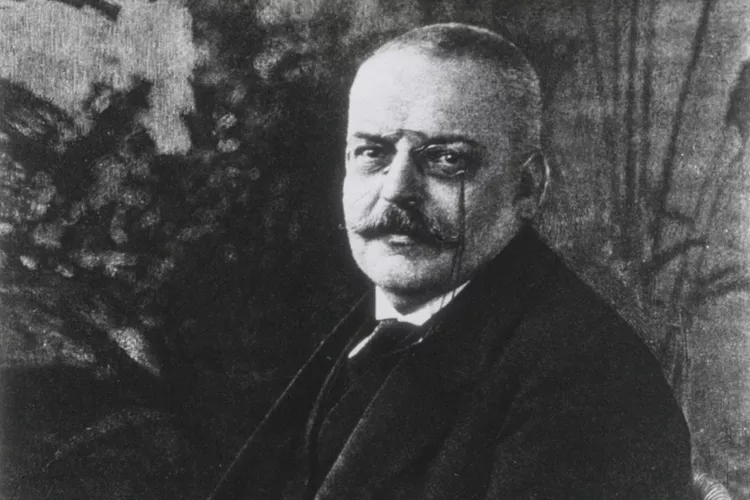ALZHEIMER'S DISEASE: 10 Facts to Know About the Dementia Disease Type

Did you know that Alzheimer's disease, named after Dr. Alois Alzheimer who first discovered it in 1906, is a progressive disease where dementia symptoms gradually worsen and that no cure has been discovered for it yet?
Dementia is a general term for memory loss and other cognitive abilities serious enough to interfere with daily life. In 1906, German physician Dr. Alois Alzheimer first described "a peculiar disease" — one of profound memory loss and microscopic brain changes — a disease we now know as Alzheimer's, a type of dementia that affects memory, thinking and behavior.
One of Alzheimer's patients was a woman named Auguste D, who had been hospitalized since 1901. She was 51 years old and showed signs of dementia, including memory loss, disorientation, aphasia, confusion, hallucinations, and delusions. Alzheimer treated her and documented her symptoms in depth, as well as his conversations with her. He noted that at one point when Auguste was unable to correctly write something, she stated, “I have lost myself.”
After Auguste died in 1906 at the age of 55, Alzheimer asked that her brain and records be sent to him for his research. When he studied it, he discovered that it contained the characteristics that we now think of as hallmarks of Alzheimer's disease, specifically a buildup of amyloid plaques and neurofibrillary tangles. Her brain also showed cerebral atrophy, another finding typical in Alzheimer's disease.
Interestingly, it was not until 1995 that his medical records documenting his care of Auguste D. and conversations with her, as well as sample of her brain tissue, were found. His notes revealed additional insight into Alzheimer's research and also allowed scientists to directly verify the brain changes he had described in his lecture.
Here are some facts to know about Alzheimer's disease that accounts for 60-80% of dementia cases around the world:
FACT 1: Alzheimer's disease was discovered by a clinical psychiatrist and neuroanatomist, Alois Alzheimer, on November 3, 1906, when he reported “A peculiar severe disease process of the cerebral cortex” to the 37th Meeting of South-West German Psychiatrists in Tubingen. Alzheimer published three further cases in 1909 and a “plaque-only” variant in 1911, which reexamination of the original specimens in 1993 showed to be a different stage of the same process. Alzheimer died in 1915, aged 51, soon after gaining the chair of psychiatry in Breslau, and long before his name became a household word.
FACT 2: Alzheimer's is not a normal part of aging. The majority of people with Alzheimer's are 65 and older. Alzheimer’s disease is considered to be younger-onset Alzheimer’s if it affects a person under 65. Younger-onset can also be referred to as early-onset Alzheimer’s. People with younger-onset Alzheimer’s can be in the early, middle or late stage of the disease.
FACT 3: Alzheimer's is a progressive disease, where dementia symptoms gradually worsen over a number of years. In its early stages, memory loss is mild, but with late-stage Alzheimer's, individuals lose the ability to carry on a conversation and respond to their environment. On average, a person with Alzheimer's lives 4 to 8 years after diagnosis but can live as long as 20 years, depending on other factors.
FACT 4: Alzheimer's has no cure, but two treatments — aducanumab (Aduhelm™) and lecanemab (Leqembi®) — demonstrate that removing beta-amyloid, one of the hallmarks of Alzheimer’s disease, from the brain reduces cognitive and functional decline in people living with early Alzheimer’s. Other treatments can temporarily slow the worsening of dementia symptoms and improve quality of life for those with Alzheimer's and their caregivers. Today, there is a worldwide effort underway to find better ways to treat the disease, delay its onset and prevent it from developing.
FACT 5: The most common early symptom of Alzheimer's is difficulty remembering newly learned information. Just like the rest of our bodies, our brains change as we age. Alzheimer's changes typically begin in the part of the brain that affects learning. As Alzheimer's advances through the brain it leads to increasingly severe symptoms, including disorientation, mood and behavior changes; deepening confusion about events, time and place; unfounded suspicions about family, friends and professional caregivers; more serious memory loss and behavior changes; and difficulty speaking, swallowing and walking.
FACT 6: People with memory loss or other possible signs of Alzheimer’s may find it hard to recognize they have a problem. Signs of dementia may be more obvious to family members or friends. Anyone experiencing dementia-like symptoms should see a doctor as soon as possible. Earlier diagnosis and intervention methods are improving dramatically, and treatment options and sources of support can improve quality of life.
FACT 7: Though associated with dementia, Alzheimer's is not the only cause of memory loss. Many people have trouble with memory — this does NOT mean they have Alzheimer's. There are many different causes of memory loss. If you or someone you know is experiencing symptoms of dementia, it is best to visit a doctor so the cause can be determined.
FACT 8: Microscopic changes in the brain begin long before the first signs of memory loss. The brain has 100 billion nerve cells (neurons). Each nerve cell connects with many others to form communication networks. Groups of nerve cells have special jobs. Some are involved in thinking, learning and remembering. Others help us see, hear and smell. To do their work, brain cells operate like tiny factories. They receive supplies, generate energy, construct equipment and get rid of waste. Cells also process and store information and communicate with other cells. Keeping everything running requires coordination as well as large amounts of fuel and oxygen.
FACT 9: Scientists believe Alzheimer's disease prevents parts of a cell's factory from running well. They are not sure where the trouble starts. But just like a real factory, backups and breakdowns in one system cause problems in other areas. As damage spreads, cells lose their ability to do their jobs and, eventually die, causing irreversible changes in the brain. Two abnormal structures called plaques and tangles are prime suspects in damaging and killing nerve cells. Though autopsy studies show that most people develop some plaques and tangles as they age, those with Alzheimer’s tend to develop far more and in a predictable pattern, beginning in the areas important for memory before spreading to other regions.
FACT 10: Scientists do not know exactly what role plaques and tangles play in Alzheimer's disease. Most experts believe they somehow play a critical role in blocking communication among nerve cells and disrupting processes that cells need to survive. It's the destruction and death of nerve cells that causes memory failure, personality changes, problems carrying out daily activities and other symptoms of Alzheimer's disease.
Source: Alzheimer's Association®
#penglobalhealth



